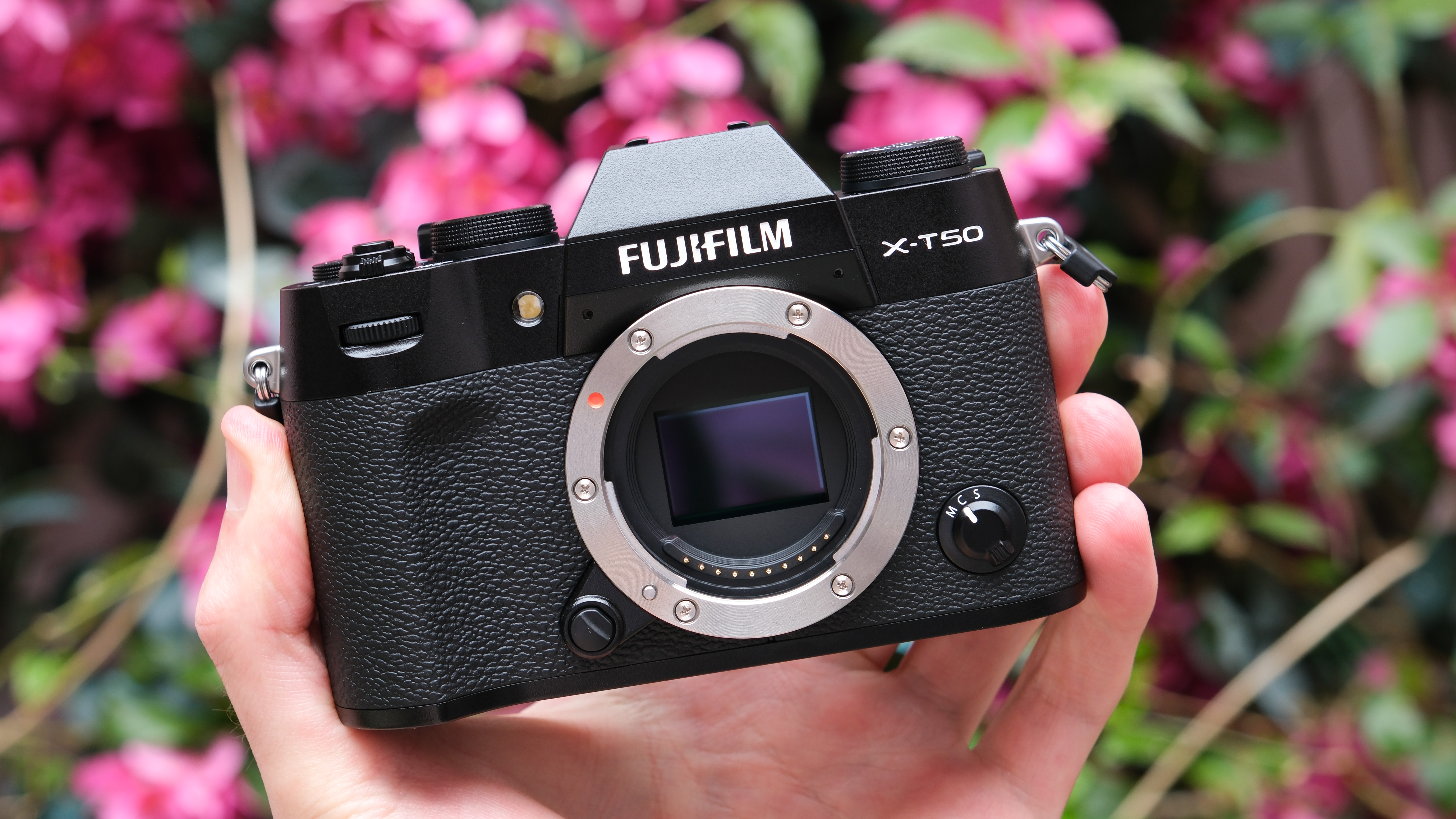The best camcorders in 2025: perfect all-in-one video cameras
The best camcorders are the perfect all-in-one video cameras for many workflows. Pick the right one for you
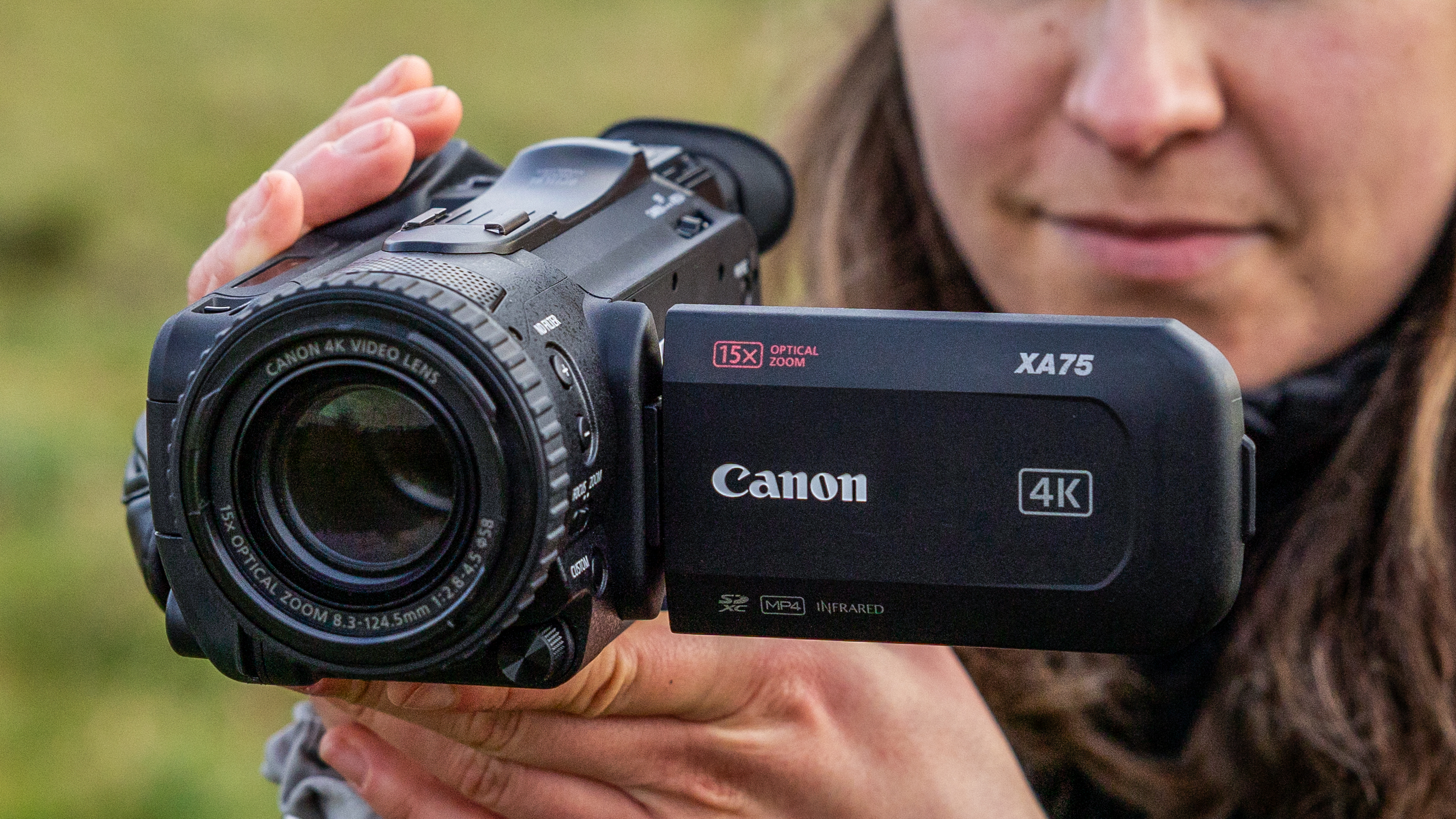
Camcorders are not as popular as they were - but they are more than capable of competing with modern mirrorless cameras and phones. The huge built-in zooms is a big plus in their favor - as is the fact that they are specifically designed for video, and not a bunch of other things.
Nowadays, with cameras for filmmaking available at every price point, people are discovering that a device specifically designed for shooting video often proves to be a far better option than a multi-purpose camera phone. When it comes to choosing the best camera for video, a camcorder is a great option.
Did you know there is more than one type of camcorder? You might generally think of smaller, inexpensive all-in-one camcorders for casual use, but there's a growing professional broadcast market too, as demonstrated by the recent Canon XA75, for example. Sitting between the budget-friendly consumer camcorders and the professional camcorders for TV broadcast, there are lots of 4K camcorders aimed at budding filmmakers.
In the last year of so, several of the major manufacturers have discontinued their cheapest and most compact options. But there is still lots of choice.We've put together a list of what we reckon are the best camcorders available on the market right now. From self-contained shooters designed for holidays and day-to-day casual shooting to the best options for vlogging, documentaries, and serious movie-making.

Chris has been writing about photography and video-making professionally for nearly 40 years and has tested hundreds of different cameras and camcorders. He was the editor of Video Camera magazine, and a regular contributor to What Camcorder and Camcorder User. At the height of the camcorder boom in the 1990s he wrote the book Teach Yourself The Camcorder.
The Quick List
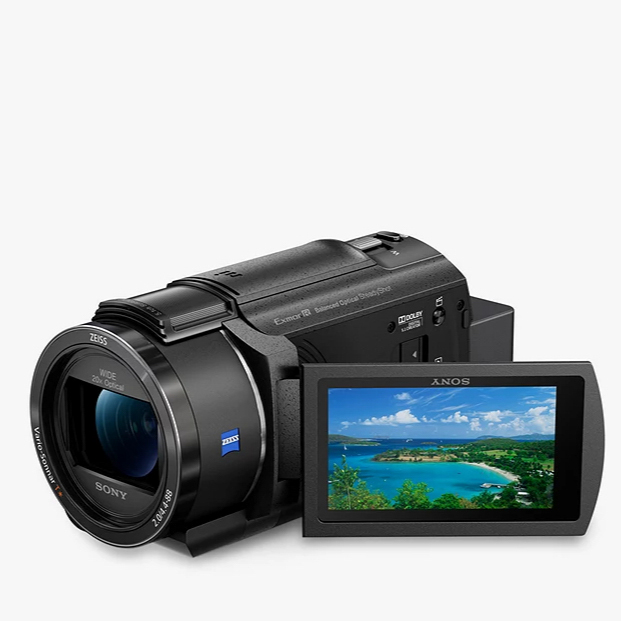
A compact camcorder that doesn’t skimp on its features. Fronted by a Carl Zeiss 20x optical zoom, offers a wifi-connected 4K camcorder at an affordable price.
Read more below
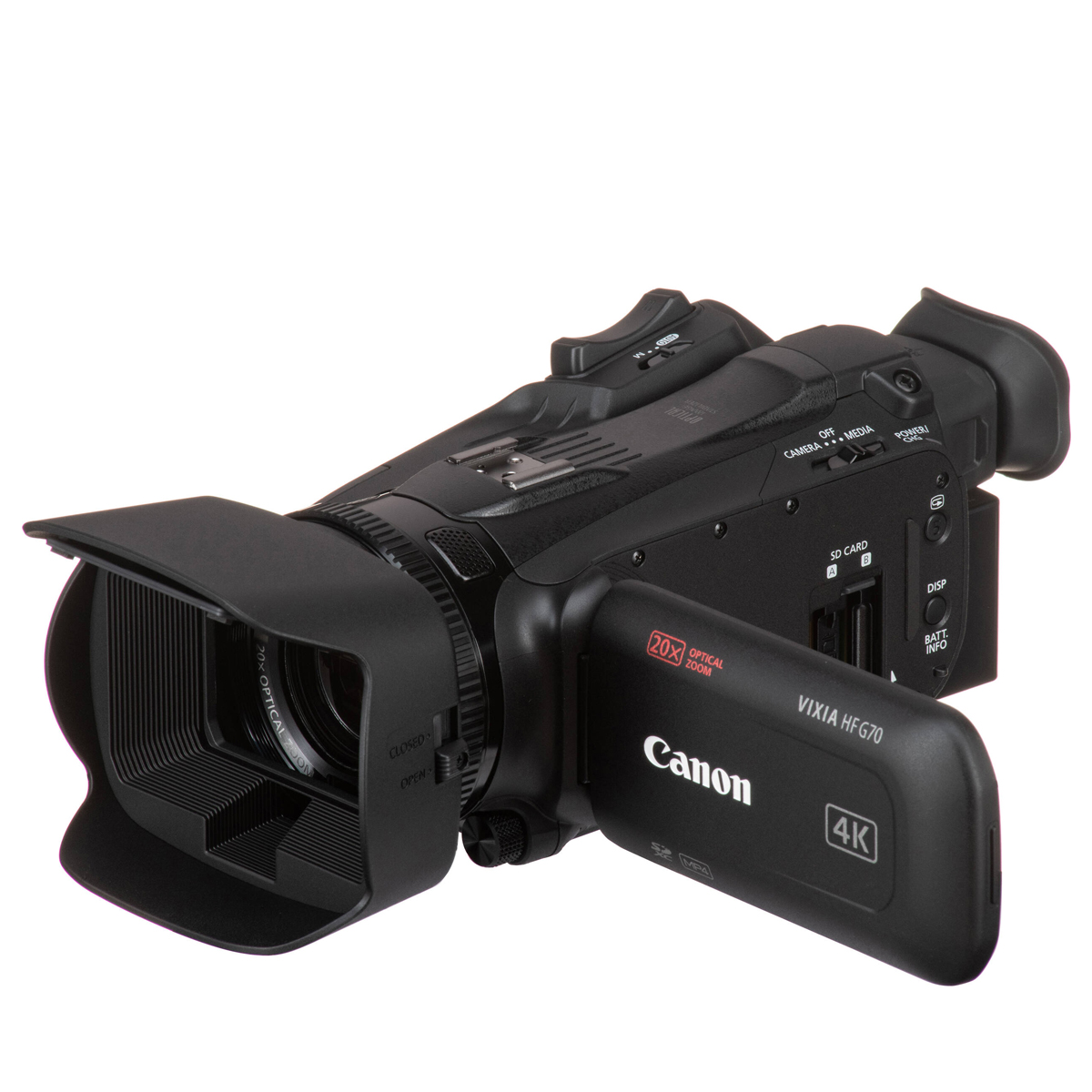
For the price, this camcorder from Canon really packs a punch, useful for everyday use or more professional work.
Read more below
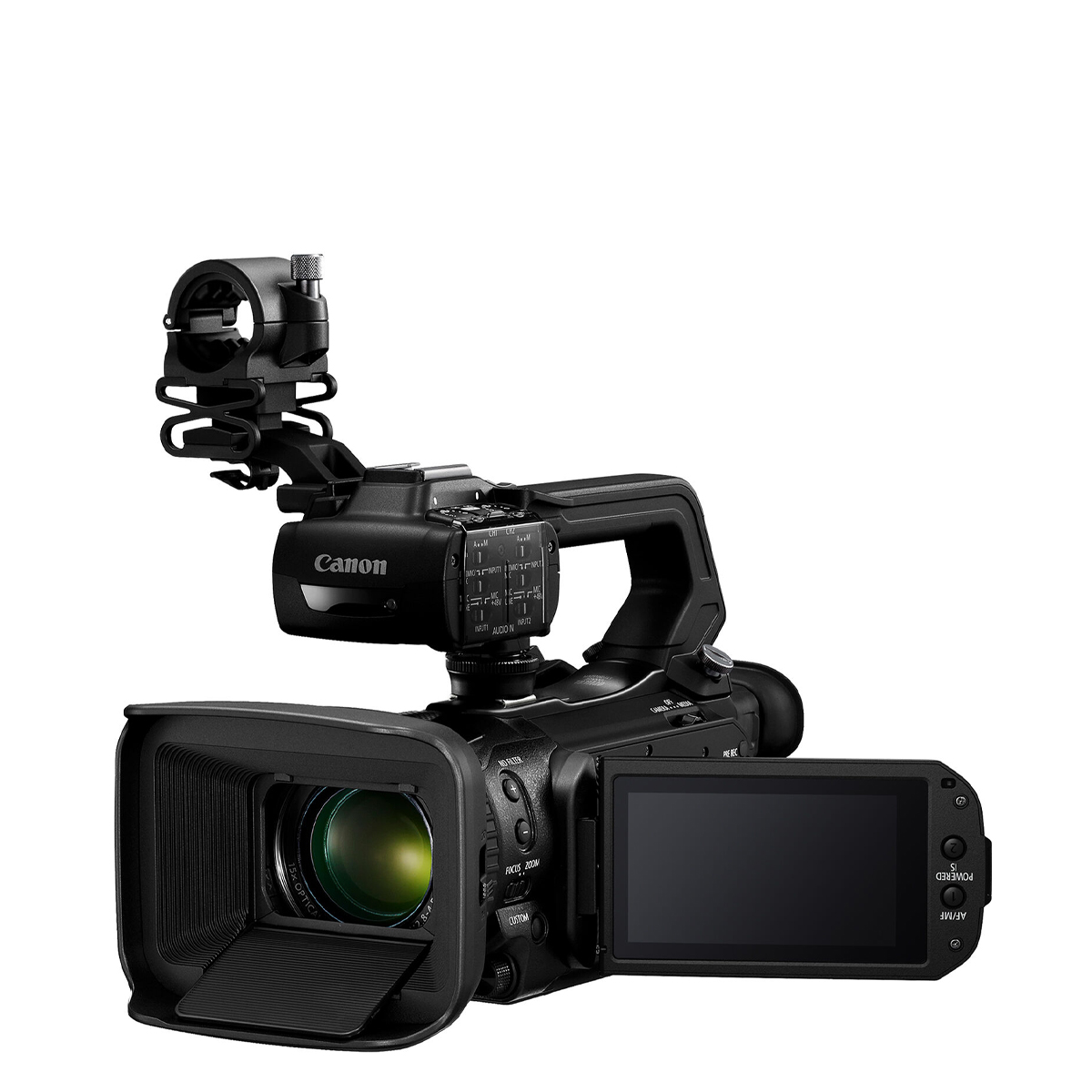
A big 1in-type sensor is the key attraction for serious moviemakers with this professional-grade camcorder that gives you full audio control with two XLR microphone connectors.
Read more below
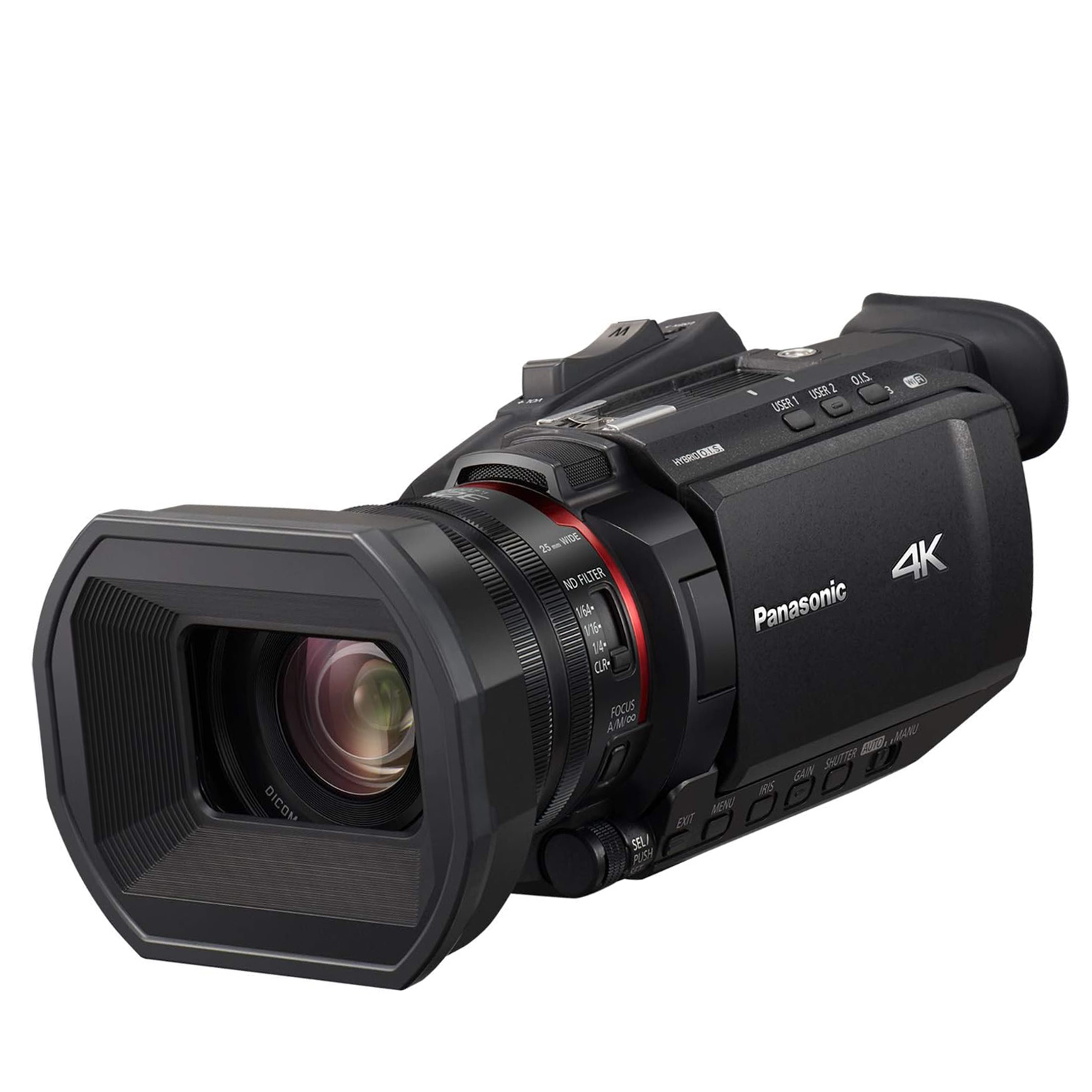
Most camcorders are perfect for videoing sport, but the X1500 is a top performer thanks to its great 120fps slow-motion frame rate settings, and its powerful built-in 24x zoom.
Read more below
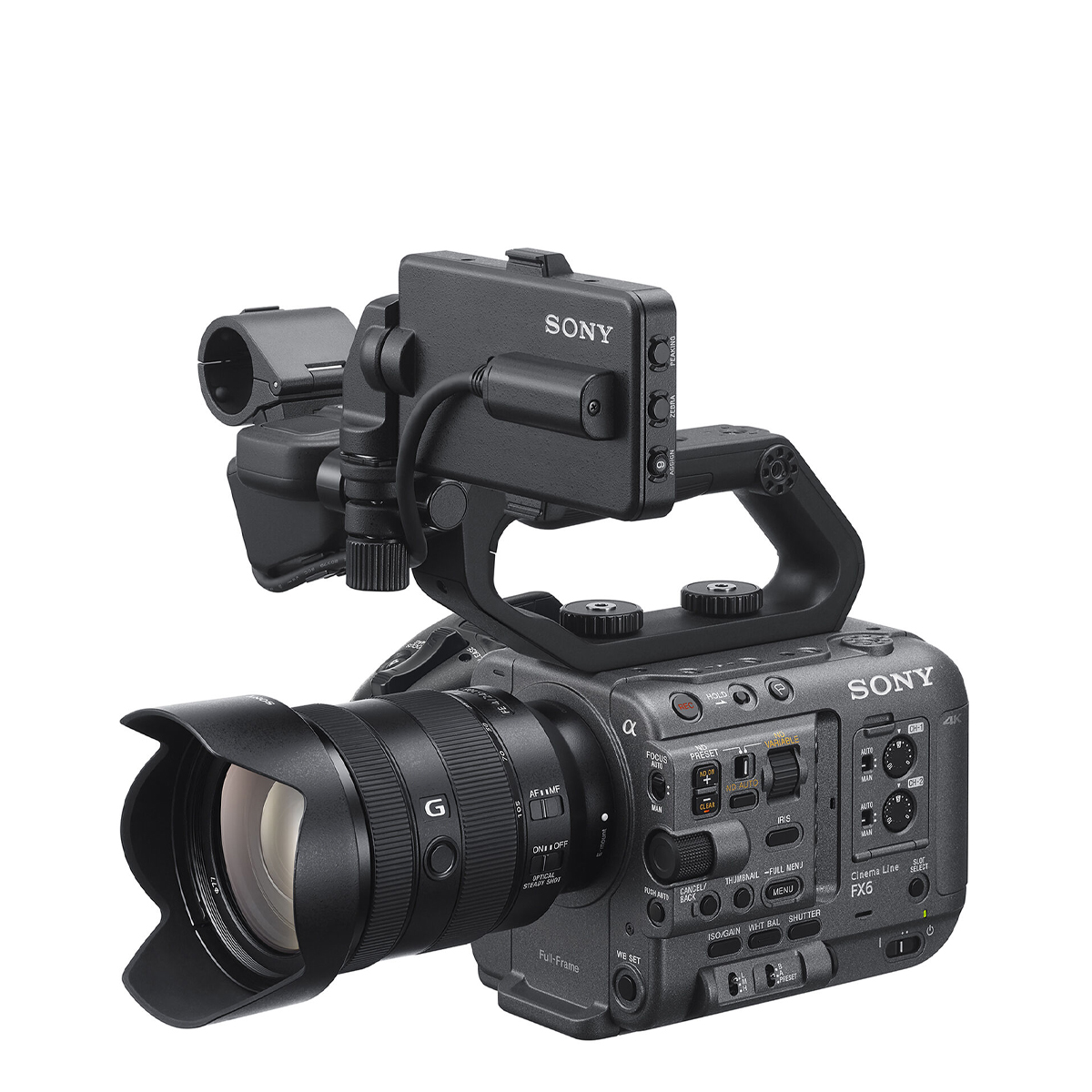
This is a top-performing camcorder with a full-frame sensor and interchangeable lens mount which make it a great choice for cinematography, and for low-light action.
Read more below
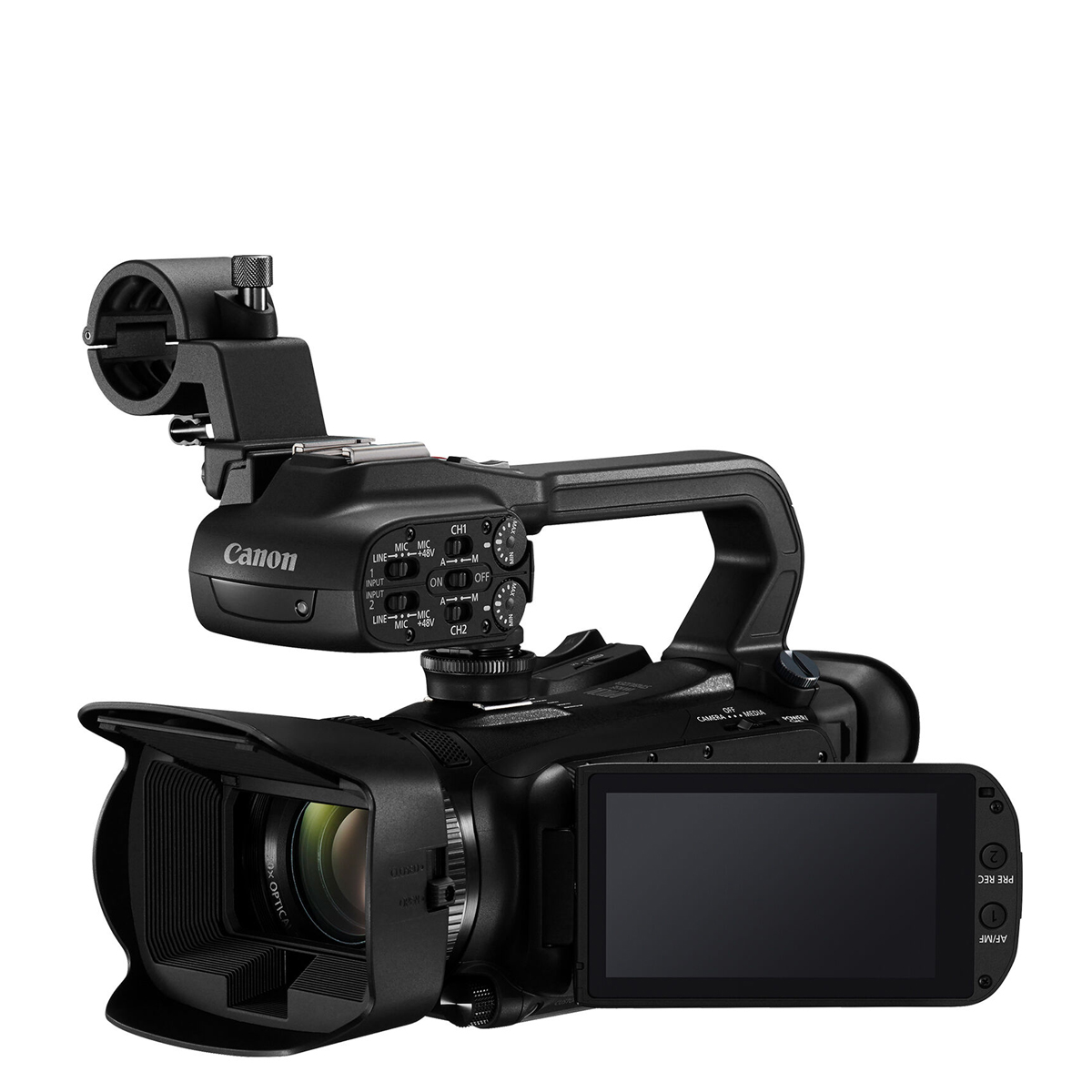
A great choice for serious content creators - but the lack of Wi-Fi means this is better for use in a home setup where you are set up for live streaming.
Read more below
Best camcorders
Why you can trust Digital Camera World
Best budget camcorder
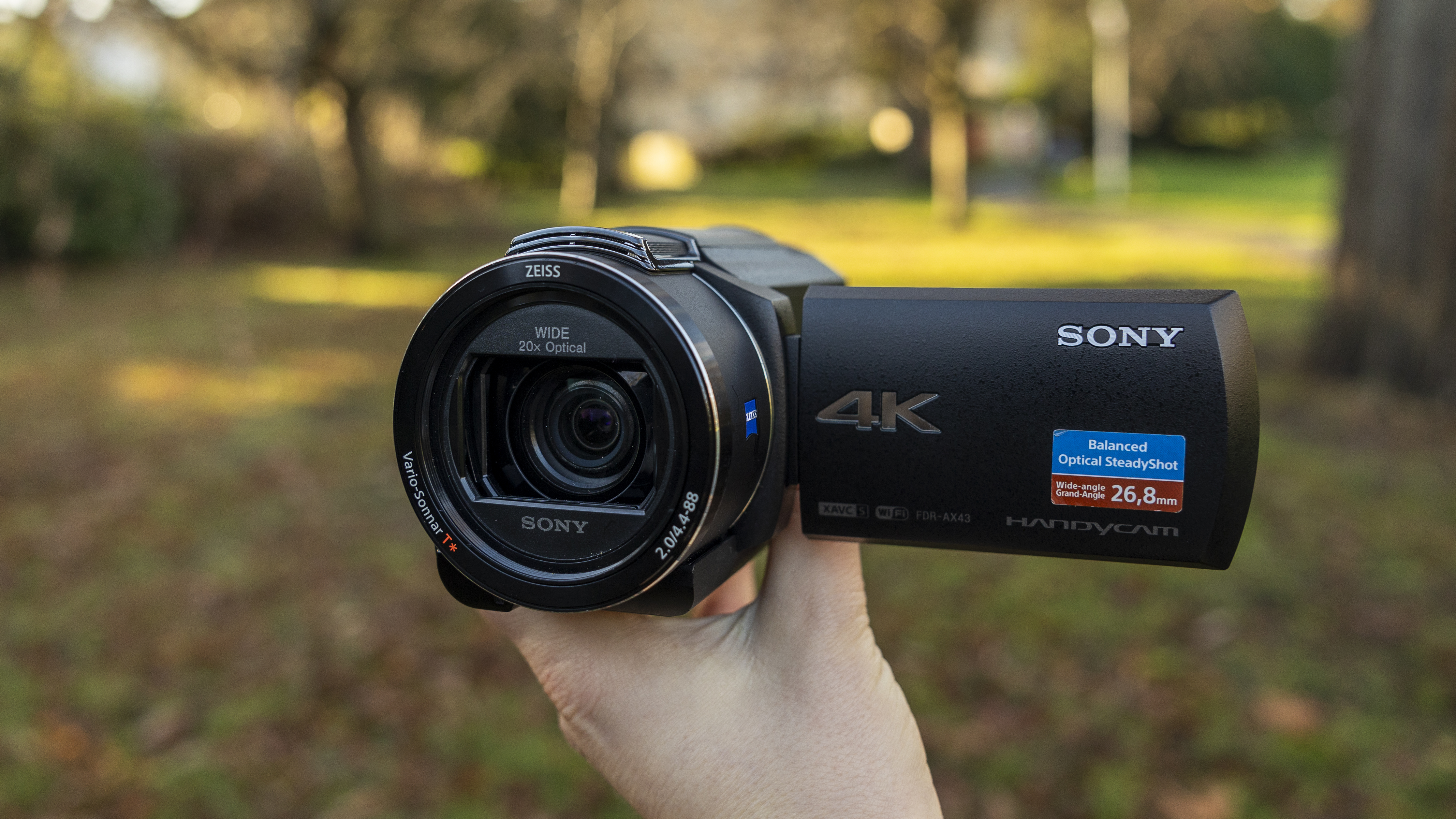

Specifications
Reasons to buy
Reasons to avoid
The FDR-AX43 may be compact, but it doesn’t skimp on its features. It is fronted by a Carl Zeiss Vario Sonnar T lens, which includes a 20x optical zoom, 4K shooting, a low-noise Exmor R CMOS sensor, dual-video recording in XAVC S or AVCHD formats, and easy-to-share MP4.
What we love about this model is that, unlike cheaper options, it offers wifi connectivity (and NFC) - so you can transfer your video to your phone using the Sony app - making it great for content creation. What's more, it takes audio seriously - allowing you to monitor your sound with headphones, or opt for a better accessory microphone thanks to the in-built mic socket.
However, expect limitations in low light, but if you’re in the market for an easy-to-manage camcorder capable of 4K video, then this model is a fantastic choice. That balance between functionality, portability, and the price is why it takes our choice as the all-round best budget camcorder. There is a very similar Sony AX53 – that is worth looking out for as it adds a very useful eye-level viewfinder for a higher price, although as it is now officially discontinued, it can be hard to find in-store.
Read more: Sony FDR-AX43 review
Best camcorder for beginners
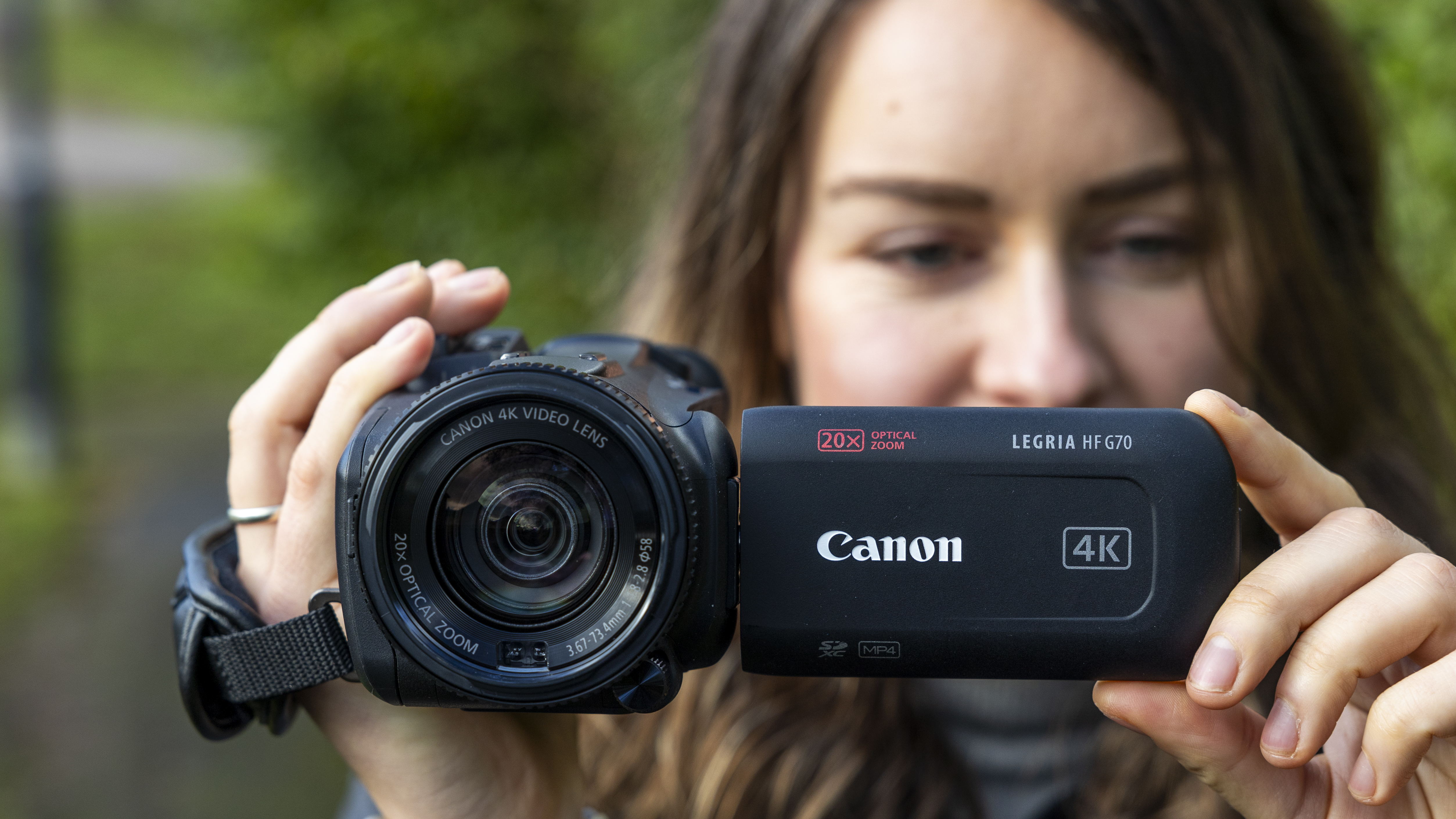
Specifications
Reasons to buy
Reasons to avoid
The Canon HF G70 stands out as a solid pick for those seeking a user-friendly video camera that delivers good quality straight off the bat. It's a great choice for those beginners who are adept at using DSLRs or advanced mirrorless cameras for stills but seeking a dedicated video setup.
While the controls aren't flawless, the five assignable buttons offer a decent level of customization, enhancing its adaptability. However, the absence of Wi-Fi connectivity might deter content creators from seeking seamless sharing options.
This is attractively price, and holds appeal for individuals who are comfortable with the functionality and handling of a traditional camcorder, prioritizing simplicity over extensive video modes, codecs, or formats tailored for intensive editing.
Read more: Canon Vixia / Legria HF G70 review
Best camcorder for filmmaking
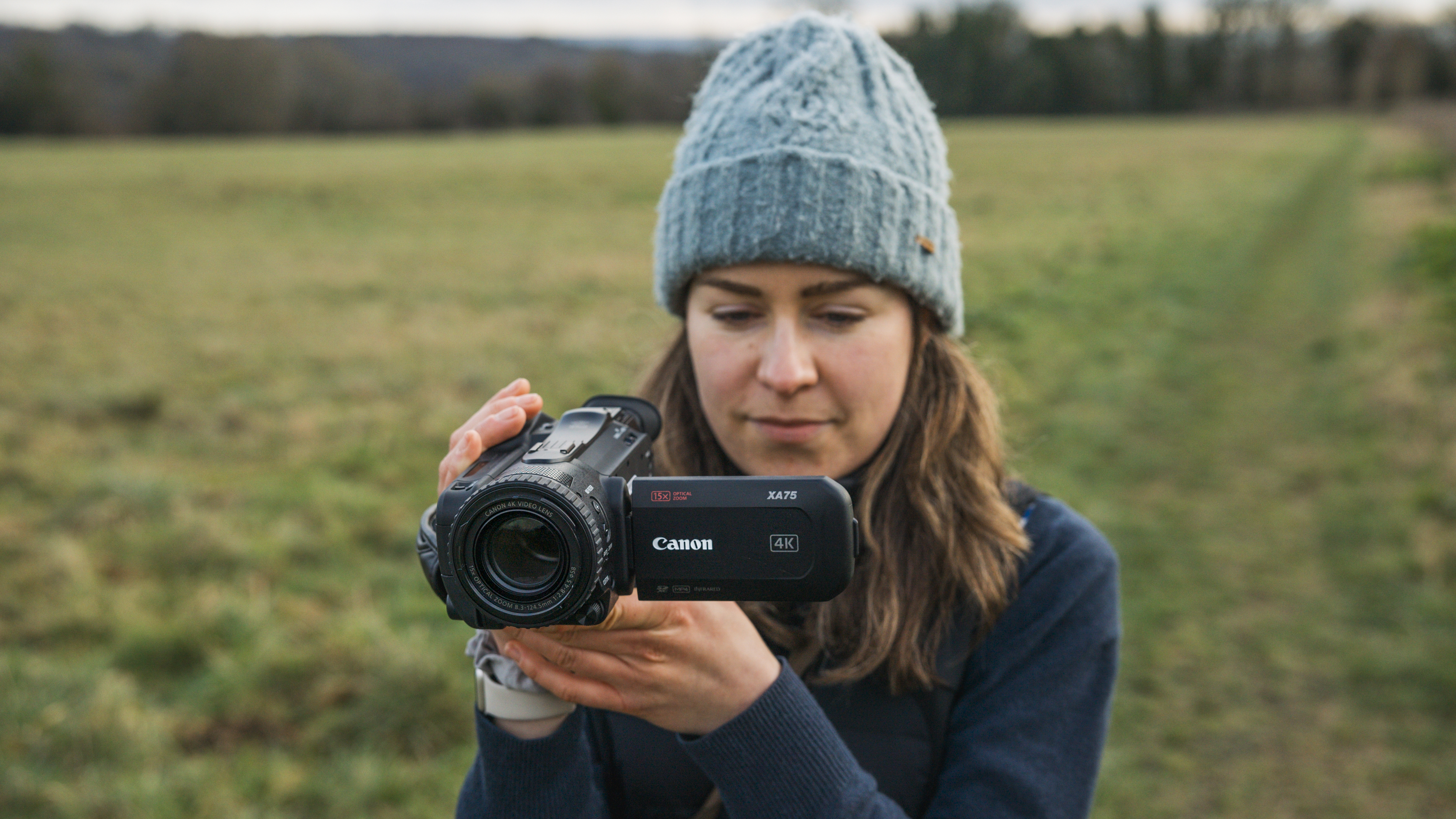
Specifications
Reasons to buy
Reasons to avoid
The Canon XA75 presents a unique balance – powerful enough for serious filmmaking yet discreet. Its compact size makes it an ideal companion for covering live events such as conferences and weddings, where remaining inconspicuous is paramount. Having filmed multiple weddings using various top-tier hybrid cameras, I found the XA75's form factor notably more user-friendly compared to a DSLR. Its low-light performance also pleasantly surprised me, rivaling that of my Canon EOS R6.
However, despite being Canon's top-tier professional camcorder, the absence of a Wi-Fi module feels constraining. In situations where swift content sharing is essential – common when using a camcorder on the move – relying solely on SD cards or USB-C transfers becomes a limitation. For this reason, we think this is a better option for serious filmmakers, who take their time setting up shots, than it is for content creators
At this price range, the maximum UHD 4K30p video recording capability seems underwhelming. Comparable camcorders like the Panasonic HC-X2000E offer 4K 50p/60p at a higher bitrate, while the Canon EOS R6 Mark II mirrorless camera provides 6K 60p ProRes RAW via HDMI. Nonetheless, the XA75 excels in critical areas such as autofocus tracking, power zoom, dual XLR mic inputs, and uninterrupted continuous recording, catering precisely to the needs of the serious moviemaker.
Read more: Canon XA75 review
Best camcorder for sport
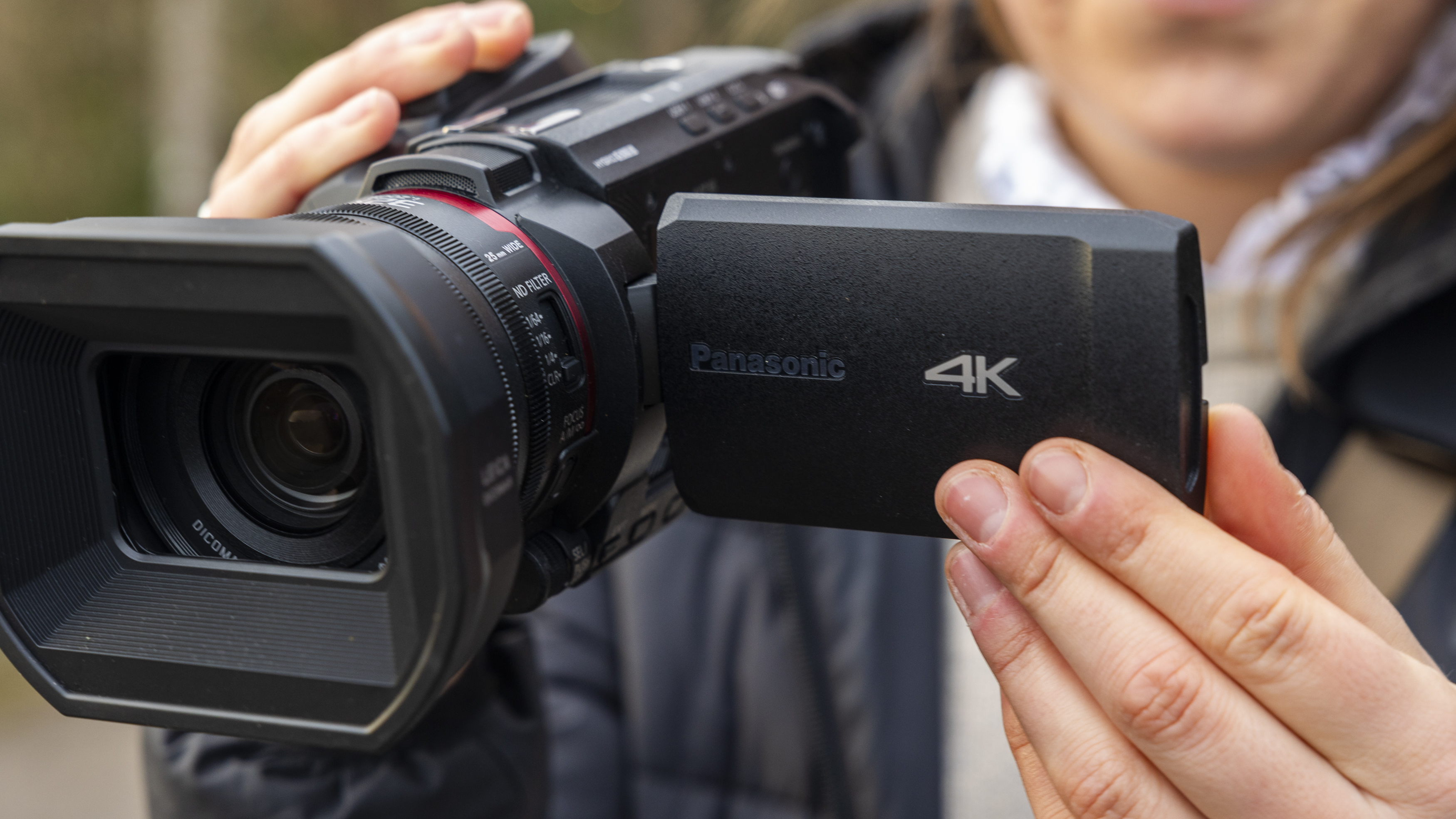
Specifications
Reasons to buy
Reasons to avoid
Camcorders are a great option for shooting sport (or wildlife) as they have big super telephoto lenses built into a remarkably compact camera. But we like this Panasonic X1500 in particular for its balance of features for those wanting to shoot action. Its mid-sized sensor means it packs a monster 24x zoom - offering a range equivalent to a 25-600mm full-frame focal length range. That's enough to get you in close to the action in field sports without the need to resort to a digital zoom option. It also has better slow-motion credentials than most, offering 4K at 60p. Switch down to Full HD, and the Super Slow setting allows you to capture at 120fps.
Weighing in at 1.2kg it isn’t a casual option, but it is much lighter than its predecessor the HC-X1000 and features a large 3.5-inch color touchscreen, and usefully has two SD card slots. An optional top handle is a useful addition - offering 2x XLR pro microphone inputs and a light.
See our full Panasonic HC-X1500 review
Best professional camcorder
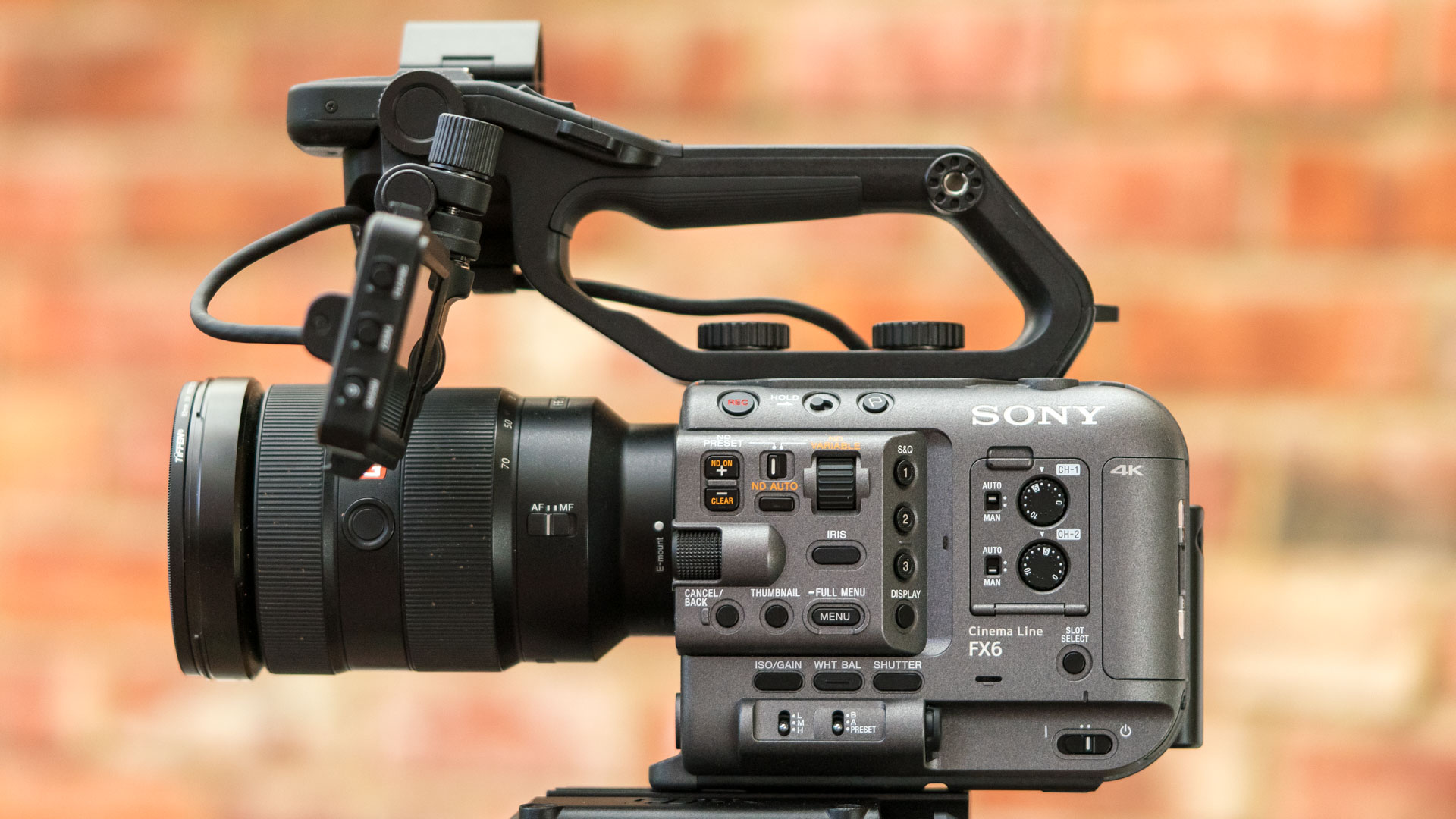
Specifications
Reasons to buy
Reasons to avoid
The Sony ILME-FX6 give a real step-up in production values - as it offers a huge full-frame sensor, and interchangeable lenses. These combine to allow you to control depth of field in a way that is not possible with smaller-sensored camcorders - whilst giving you the scope to fit whatever Sony E-mount lens you like. This makes it the perfect choice for cinematography - whilst giving you the handling characteristics of a camcorder.
The basic spec of the FX6 is the same as on the Sony A7S III mirrorless camera. This means that we found it delivered stunning 4K image quality - and particularly when shooting at high ISOs. Autofocus is really impressive too, allowing it to cope with action subjects - which is complemented by you being able to shoot slow-motion sequences at 240fps in Full HD. You can record internally in 10-bit codecs - or opt to record onto an external recorder in 16-bit RAW. As we'd expect, you get essential pro features such as XLR microphone inputs, and a built-in variable ND filter.
In our tests, we were simply stunned by the quality of this cine camera - offering a full-frame performance we usually only see on models costing substantially more.
Read more: Sony FX6 review
Best camcorder for YouTube

Specifications
Reasons to buy
Reasons to avoid
The Canon XA65 stands out as an excellent option for content creators seeking a high-quality video camera without the hassle of swapping lenses or diving deep into exposure settings. Upgrading from the HF G70 to access enhanced audio controls and XLR microphone inputs through its detachable handle is a worthwhile consideration for those creating videos for YouTube at home or in a studio.
However, its limited connectivity, lacking Bluetooth or Wi-Fi, does limit its versatility. Still, the option to stream live events via UVC remains a viable choice. While the design is practical, it lacks the flair to excite, and the absence of waterproofing restricts its use in adverse outdoor conditions.
Comparatively, hybrid Canon cameras like the Canon EOS R6 Mark II deliver superior video quality, and versatile autofocus across various filming formats, and double up as proficient still cameras, a feature the XA65 lacks.
Priced around $2,299/£2,000, the XA65 offers value by eliminating the need for additional lenses. It caters well to videographers focused on quick, news-oriented content or documentary style videos rather than aiming for visually stunning cinematic productions. Despite feeling somewhat dated initially, I found the XA65's handling and simplicity highly enjoyable.
Read more: Canon XA65 review
How to choose the best camcorder
What are the advantages of using a camcorder?
If you're considering returning to the world of camcorders for the first time after adventures many years ago with 8mm or VHS-C tape, you might be wondering why you need one at all.
The key advantage of owning a camcorder over a camera phone is that you get a vast optical zoom lens built-in, meaning you can get closer to your subjects without compromising the quality of your image. This is particularly useful when shooting sports and wildlife, and is also something that sets camcorders apart from the best action cameras.
What are the key features to look out for on a camcorder?
Zoom range
All camcorders offer an impressive zoom, that make them great for sport and wildlife thanks to their long telephoto settings. The zoom range is usually given as a ratio - such as 30x, where the telephoto setting is 30 times longer than the wide-angle focal length. This range is usually extended with the provision of a digital zoom, that allows you to crop into the image to give you more telephoto fire power, but at a reducted resolution. The zoom range you get, however, is largely dependent on the sensor size…
Sensor size
The sensor size used in camcorders is relatively small - smaller than those used in mirrorless cameras, and more similar to those found in compact cameras or camera phones. The bigger the sensor, the better the video quality will be - particularly when shooting in lower light conditions.
The biggest sensor size commonly found is the Type 1 or one-inch sensor, which measures 0.52 x 0.35in (13.2 x 8.8mm) - this is usually reserved for pro models.
Mid-range camcorders typically use a 1/2.5in sensor that measures
5.76 x 4.29mm - which is about a quarter of the size of the Type 1. The smallest sensor, used on the most pocketable camcorders, uses a 1/5.8in sensor - which is about three-quarters smaller again.
4K or Full HD?
The maximum resolution of the video shot by camcorders is either 4K or Full HD. A 4K video image measures 3840 x 2160 pixels - and is what you get on all mid-range and pro models. Budget camcorders offer what is known as Full HD (Full High Definition) - also known as 1080P or 2K - this shoots with a resolution of 1920 x 1080. Having 4K not only gives you better image quality - but also allows you to switch down resolution to use a high frame rate to enable slow-motion recording.
Audio sockets
All camcorders have built-in stereo microphones and will have a speaker to replay your footage on location through the LCD screen. However, the positioning of this basic integrated microphone means that audio is always better if recorded using an external mic. This can be positioned closer to the subject (wireless microphones are increasingly popular for recording speech); alternatively, shotgun microphones can do a better job of capturing distant sound. However, this is not possible with all camcorders, as some do not have a microphone socket. Professional camcorders tend to offer pro-grade XLR mic sockets, rather than a 3.5mm jack. A headphone socket is also essential for serious filmmaking - allowing you to monitor the quality of the sound you are actually recording.
How we test camcorders
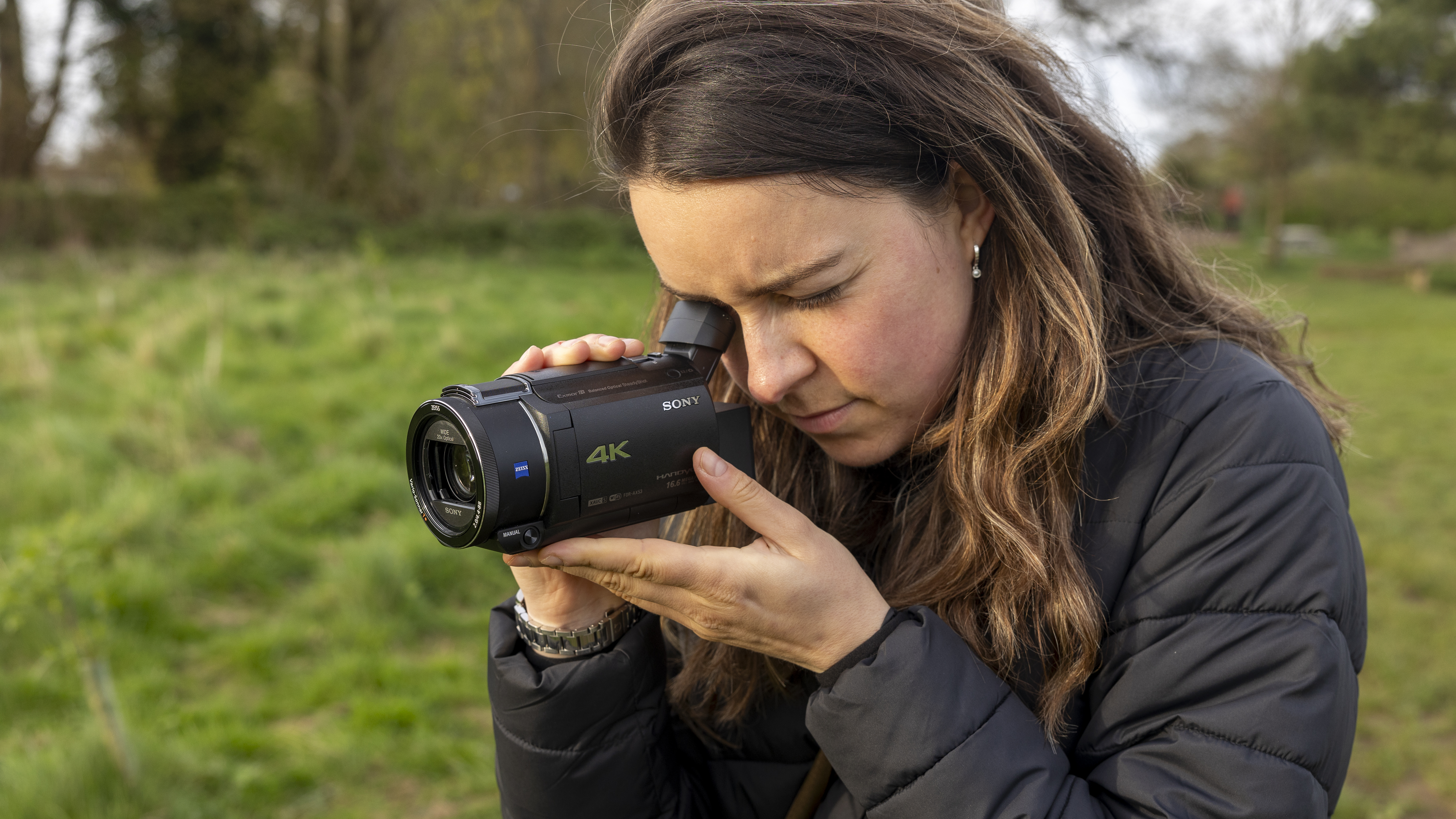
We test camcorders by using them in a variety of different shooting conditions. The quality of the video is assessed by comparing footage against that taken by other cameras that we have assessed. Ergonomics are equally important - as the best camcorders are designed so that controls are easy to reach and use. We therefore pay particular attention to the user experience with each of the camcorders we review.
Get the Digital Camera World Newsletter
The best camera deals, reviews, product advice, and unmissable photography news, direct to your inbox!
Chris George has worked on Digital Camera World since its launch in 2017. He has been writing about photography, mobile phones, video making and technology for over 30 years – and has edited numerous magazines including PhotoPlus, N-Photo, Digital Camera, Video Camera, and Professional Photography.
His first serious camera was the iconic Olympus OM10, with which he won the title of Young Photographer of the Year - long before the advent of autofocus and memory cards. Today he uses a Nikon D800, a Fujifilm X-T1, a Sony A7, and his iPhone 15 Pro Max.
He has written about technology for countless publications and websites including The Sunday Times Magazine, The Daily Telegraph, Dorling Kindersley, What Cellphone, T3 and Techradar.
- Lauren ScottFreelance contributor/former Managing Editor

